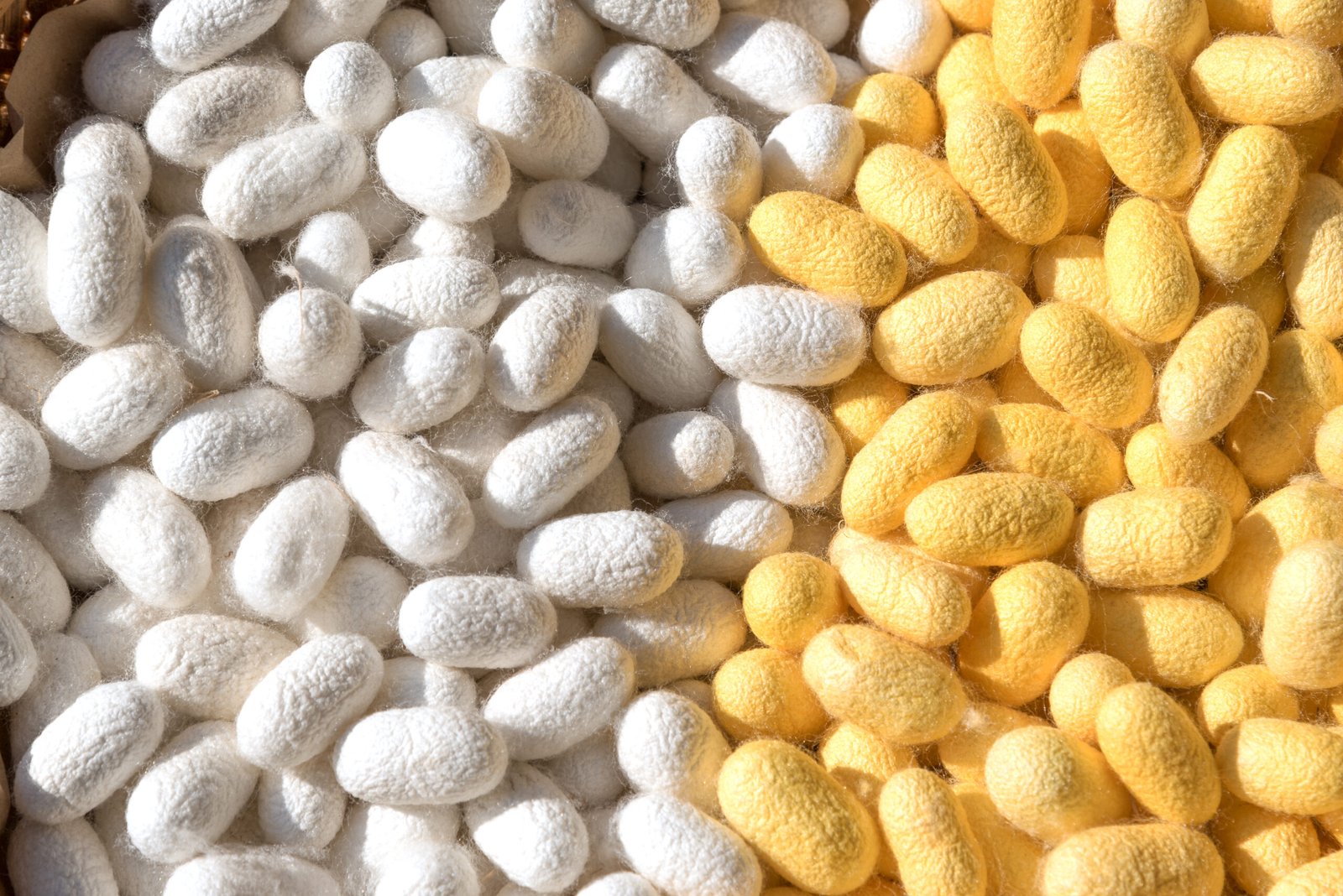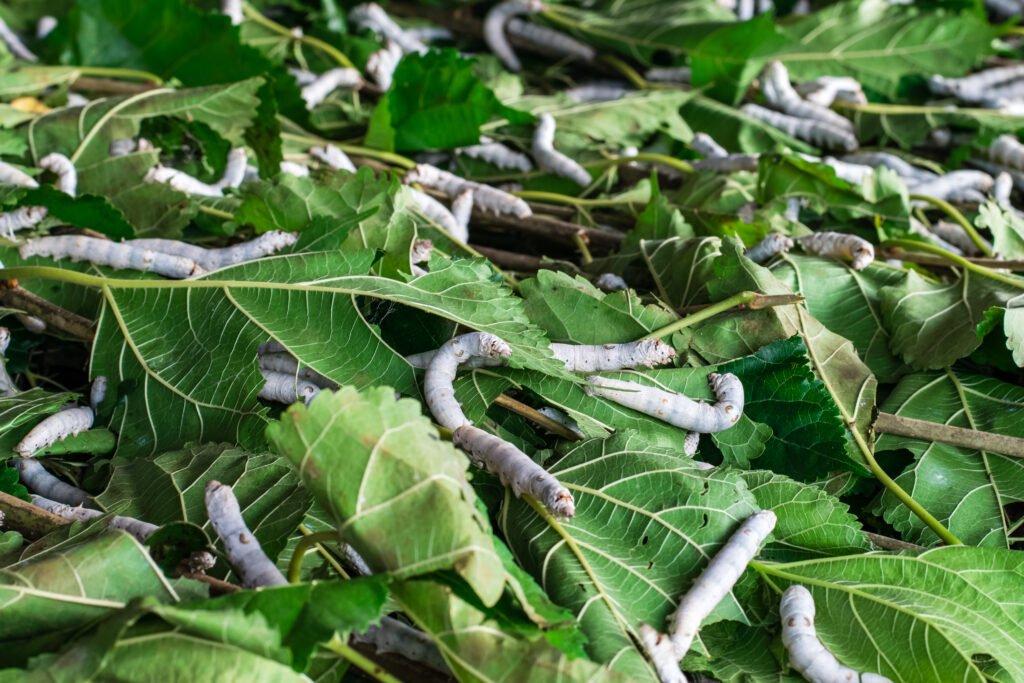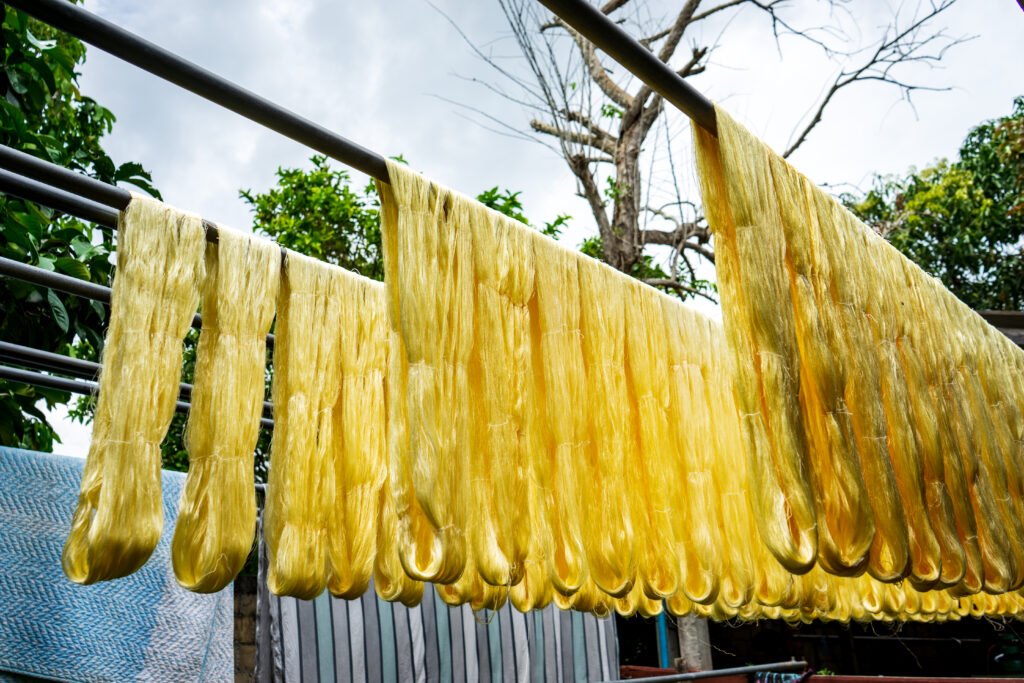Latest News
Silkworm Cultivation | A Profitable Path to Sustainable Livelihoods

Silkworm cultivation, or sericulture, is an age-old agro-based industry that plays a vital role in generating income for rural populations, especially in India, China, Thailand, and other Asian countries. The process of rearing silkworms for silk production is not only profitable but also eco-friendly, low in investment, and suitable for small-scale farmers. With increasing global demand for natural fibers and eco-fashion, silkworm farming has emerged as a high-potential agri-business opportunity.
📍 What is Silkworm Cultivation?
Silkworm cultivation involves raising silkworms (primarily Bombyx mori) on a mulberry diet to produce silk cocoons. These cocoons are later harvested and processed to extract natural silk threads. The entire process includes:

-
Mulberry cultivation (for silkworm feed)
-
Rearing silkworm larvae
-
Cocoon formation
-
Silk extraction (reeling)
Silkworms go through four stages: egg → larva → pupa → moth. The silk thread is formed during the pupa stage when the worm spins its cocoon.

silkworm eating leaf mulberry in farm
🌿 Mulberry Farming – The Backbone of Sericulture
Silkworms feed exclusively on mulberry leaves, making mulberry cultivation a critical component. Key facts:
-
High-yielding mulberry varieties like S-13, V1, and MR2 are used.
-
Plantations thrive in tropical and subtropical climates.
-
Regular pruning ensures a fresh and nutritious leaf supply.
-
Well-drained loamy soil with neutral pH (6.5-7) is ideal.
Farmers must ensure pest-free, chemical-free mulberry leaves to achieve high cocoon yield.
🐛 Rearing of Silkworms
Silkworm rearing requires controlled environmental conditions for successful larval development:
-
Temperature: 25–28°C
-
Humidity: 70–80%
-
Rearing house: Clean, dark, and ventilated
-
Feeding: Fresh mulberry leaves 4–5 times daily
Silkworms pass through five larval instars, consuming large quantities of leaves before they begin spinning their cocoons.
🧵 Cocoon Harvesting and Silk Reeling
Once the worms form their cocoons (in 25–28 days), they are ready for harvest. The cocoons are sun-dried or stifled (boiled) to kill the pupa, preventing damage to the silk thread.
Key steps in reeling:
-
Boiling the cocoon to soften the sericin (gum)
-
Unwinding the silk thread
-
Spooling and twisting to form raw silk yarn
Each cocoon yields 300–1,000 meters of silk filament, depending on the breed and rearing conditions.
📊 Economics of Silkworm Farming
Silkworm cultivation is cost-effective and highly profitable when done scientifically:
| Factor | Small-Scale (1 Acre Mulberry) |
|---|---|
| Investment | ₹30,000–₹50,000 annually |
| Cocoon Yield | 120–150 kg/year |
| Market Price | ₹450–₹600/kg |
| Net Income | ₹40,000–₹70,000/year |
Income increases significantly when integrated with silk reeling units or value-added products like silk garments and handicrafts.
🧑🌾 Government Support and Training
The Indian government, through agencies like the Central Silk Board (CSB) and KVKs, offers:
-
Subsidies for mulberry plantation and rearing units
-
Training in disease management and hybrid seed use
-
Access to reeling machines and quality seeds
Farmers can also sell directly to government-authorized cocoon markets or silk weaving units.
🌍 Sustainability and Women Empowerment
Silkworm cultivation is:
-
Eco-friendly: Minimal chemical use and low carbon footprint.
-
Inclusive: Women play a major role in rearing and processing.
-
Renewable: Entire process is biodegradable and renewable.
-
Low-waste: Even waste silk is processed for spun silk or cosmetics.
It fits perfectly into sustainable agriculture models, rural employment generation, and cottage industry development.
Conclusion
Silkworm cultivation is a low-investment, high-return farming activity that offers income, employment, and sustainability. With growing demand for natural silk and government support, it is an ideal livelihood option for marginal farmers, especially in rural and semi-urban India. From mulberry farming to silk reeling, every step offers potential for value addition and empowerment. Embracing sericulture not only boosts farm income but also supports eco-friendly textile production aligned with global sustainable development goals.
❓ FAQs About Silkworm Cultivation
Q1. What is the best season to start silkworm farming?
A: Spring and autumn are ideal for silkworm rearing due to moderate temperature and humidity levels.
Q2. How long does it take for silkworms to form cocoons?
A: Silkworms take around 25 to 30 days from hatching to cocoon spinning.
Q3. Is silkworm farming profitable in India?
A: Yes, it can yield net profits of ₹40,000–₹70,000 annually per acre when managed scientifically.
Q4. What are common silkworm diseases?
A: Pebrine, flacherie, grasserie, and muscardine. Hygiene and temperature control help prevent outbreaks.
Q5. Do farmers need special training for sericulture?
A: Yes. Training is essential for understanding lifecycle management, disease control, and silk reeling.
Q6. Can women manage silkworm farming?
A: Absolutely. Many women’s self-help groups manage silkworm rearing and cocoon harvesting successfully.





















